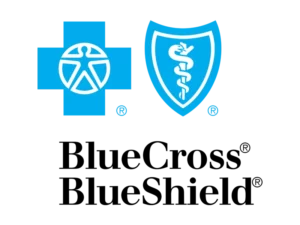Self-Destructive Behavior in Teens: Warning Signs, Causes, and Treatment

Rates of self-harm and suicide attempts in teens have increased over the last 20 years. While self-destructive behavior in teens isn’t considered a mental health disorder as such on its own, it can be associated with serious mental health problems.
Unfortunately, research has shown that teens who engage in self-harm behaviors are nine times more likely to attempt suicide.1 Therefore, teen suicide prevention is a top priority today, and so if your child is struggling with self-harm, finding the right support is essential.
This page will provide you with information from the research surrounding self-destructive behavior in teens. By having this information, you should feel better equipped to address these issues with your child. Seeking out a mental health professional can also help make the process easier.
We’ll explore the following topics in this article:
- Types of teen self-destructive behavior
- Causes of self-harm in adolescents
- Warning signs of self-harm in teens
- Self-harm and mental health disorders
- Therapy for self-harming adolescents
- Parental guidance on self-harm

Types of Teen Self-Destructive Behavior
Self-destructive behaviors are actions taken to deliberately harm oneself. There are different forms of self-destructive behavior in teens, but the main ones seen among teens in an outpatient setting are cutting, burning, and scratching.3 When we look at inpatient hospital settings, research shows that the main self-harm behavior that teens present with is self-poisoning.2 Additionally, some teens present with hitting themselves or banging on hard objects, or picking wounds.3
The severity of different self-harming behaviors also varies greatly in teens. Hitting, banging, and picking wounds are typically considered mild forms of self-harm, while moderate and severe self-harm behaviors include cutting and burning.3
Additionally, self-harm is sometimes divided into two broad subtypes: suicidal self-injury and non-suicidal self-injury (NSSI).3 Both forms of self-harm are dangerous, especially in adolescents. Therefore, recognizing the signs in your teen is the key to intervening early in order to get them the help they need.
Causes of Self-Harm in Adolescents
When considering the causes of self-harm in adolescents, researchers have found a variety of risk factors. One thought is that there are two distinct “pathways” to self-harm in teens that are impacted by several risk factors.4
It has been proposed that the suicidal self-injury subtype of teens develops self-harming behaviors due to the following risk factors:
- Depressive symptoms
- Low self-esteem
- Interpersonal challenges
- Early adversity
- Environmental stressors
Teens who fall into this subtype tend to show signs of poor mental health early on in life, with some parents reporting difficulties as early as when their child was just five years old.
The non-suicidal subtype of teens struggling with self-harm doesn’t tend to present with traits more typically associated with mental health difficulties. Instead, this group makes up a large portion of the teens who engage in self-destructive behaviors, which can make it harder to understand the root causes.
However, some studies have been able to uncover possible risk factors for this group, including increased risk-taking and impulsivity.4 Another factor that led to self-harming behaviors in the second group was having a poor support system, especially when considering relationships with peers.
There are, of course, many possible factors contributing to self-harm behavior in teens, and the list above should not be taken as an exhaustive one. Every teen is different, and understanding the unique factors that cause their self-destructive behaviors is vital for treatment to be effective.
Warning Signs of Self-Harm in Teens
Since we already covered some of the different causes of self-harm in adolescents, let’s take a look at some of the more common warning signs. As you would expect based on the different profiles described above, warning signs of self-harm in teens can present differently. Below are some of the common warning signs to look out for in teens:1
- Not being able to calm themselves down
- Being overactive in their reactions
- Not being able to think clearly in times of distress
- Changes in eating and sleeping habits
- Loss of interest in usual activities
- Shutting down emotionally and physically during crises
Sometimes, self-harm behaviors can progress quickly, becoming more and more dangerous to a teen’s life. The warning signs below are important to notice, because they can also indicate that a teen is at risk of suicide:1
- Withdrawing from friends and family
- Not taking care of their personal appearance
- Unnecessary risk-taking
- Talking about wanting to end one’s life
- Giving away important belongings
- Becoming suddenly cheerful after a period of depression
If you notice any of the signs above, do not hesitate to reach out to a mental health professional. Calling 911 or bringing a teen to your local emergency department is advised if you believe there is an immediate risk to life.
Self-Harm and Mental Health Disorders
As we mentioned earlier, self-harm isn’t a mental health disorder on its own, but the behaviors can be closely tied to various psychiatric disorders. Depression, anxiety, eating disorders, bipolar depression, schizophrenia, and borderline personality disorder (BPD) are all associated with increased self-harm behaviors in teens:1,3
Getting prompt treatment for mental health problems is a priority when teens exhibit self-destructive behaviors. Treating the underlying mental health problems through therapy, medication, and independent coping skills can lead to better outcomes for adolescents.1
Therapy for Self-Harming Adolescents
Providing early intervention for self-harm in teens gives them the best chance to get the most out of treatment. There are different types of therapy for self-harming adolescents. Let’s look at a few options below.
Dialectical Behavior Therapy (DBT) for Self-Harm
Even though DBT was originally created to treat women with BPD, it’s been adapted to help many groups of people coping with mental health problems. DBT-A is the protocol specifically for adolescents that targets self-harm and suicidal ideation.5
DBT-A is designed for treating teens in an outpatient setting and is a promising mental health treatment option for teens. The program consists of weekly individual therapy sessions as well as participation in a skills group that involves parents. The four modules of DBT (mindfulness, distress tolerance, emotion regulation, and interpersonal effectiveness) all still apply in the skills for adolescents. Many studies have shown that adolescents participating in DBT-A decrease self-harm behaviors and suicidal ideation after treatment.5
Additionally, when DBT-A treatment spans a longer timeframe, the effect on reducing self-harm is greater. In order to get the greatest benefits from the program, teens are expected to engage in therapy for a minimum of three hours per week.6 The integration of skills groups with family members is another factor that can improve outcomes from the therapy.
Cognitive Behavioral Therapy (CBT) for Self-Harm
CBT aims to teach teens how to interpret distressing situations in a more adaptive way. Rather than always focusing on the negative, CBT encourages several strategies to change the way they find meaning in their emotions and understand the consequences of different reactions.2
An important part of effective CBT is problem-solving therapy (PST). This type of therapy focuses on looking at self-harm as a maladaptive coping strategy and finding more positive replacement behaviors to deal with difficult emotions.
Integrated CBT (I-CBT) is another subset of the main therapeutic approach that is built on the social cognitive learning theory.6 It involves skills-based parent training sessions and family therapy sessions to help reinforce positive behaviors.
I-CBT is designed to be a 12-month treatment program. The beginning phase relies heavily on individual therapy sessions with the teen. Then parents engage in psycho-education groups, and finally, family sessions bring everyone together to put the skills into practice.6
SAFETY Program
A more intensive program that is used for self-harm in teens that also involves parents is the SAFETY Program.6 The program spans a 12-week period and includes phone coaching with a therapist who is available any time throughout the day. There are two different therapists involved in the treatment – one for the teen and another dedicated to the family.6
Attachment-Based Family Therapy (ABFT)
ABFT focuses mainly on improving relationships within the family as a way of treating self-harm in teens. This involves building trust between parents and their child and improving communication related to emotions and needs. Typically, this treatment takes place over 12 to 16 weeks through brief weekly therapy sessions.6
The goal of ABFT is to address different aspects of developing a healthy relationship between parents and teens. Some of the sections include relational reframe, alliance building, reattachment with parents, and promoting teen autonomy. This type of therapy is especially useful in teen suicide prevention.6
Parental Guidance on Self-Harm
Ensuring that parents are informed about what their child is going through helps to keep the therapeutic process effective. As we mentioned above, many of the treatment options for teens involve parental support. For instance, DBT-A includes a family skills group, I-CBT has specific parent training sessions, and ABFT aims to repair any damage to interpersonal relationships that can act as risk factors in teens.6
Parenting styles are also linked to treatment for teens struggling with self-harm. Being in a warm and nurturing family environment helps teenagers to feel safer and more secure in their own ability to handle difficult situations. On the contrary, when parents are overly critical or the home environment is hostile, adolescents are at a greater risk of developing mental health problems.6
Additionally, parents have the ability to help their child during this challenging time in life by promoting healthy coping skills and helping build resilience in teens.

Mission Prep: Providing a Safe Environment for Mental Health Treatment
Our team of professionals at Mission Prep is here to offer quality mental health treatment for teens, with an emphasis on suicidal thoughts and early intervention for self-harm. Depending on the severity of your child’s mental health problem and self-harm behaviors, different levels of treatment are available.
Mission Prep offers residential treatment programs for teens as well as less intensive outpatient programs. Don’t worry if you’re not sure about which option is best; call us today, and we can answer your questions and provide recommendations for the optimal treatment for your teen.
References
- Baltazar, A. (2023). Self-harm: Warning signs, risk factors, and prevention. Journal of Family Research and Practice, 3(1), 13.
- Witt, K. G., Hetrick, S. E., Rajaram, G., Hazell, P., Salisbury, T. L. T., Townsend, E., & Hawton, K. (2021). Interventions for self-harm in children and adolescents. Cochrane Database of Systematic Reviews, (3). https://doi.org/10.1002/14651858.CD013667.pub2
- Son, Y., Kim, S., & Lee, J. S. (2021). Self-injurious behavior in community youth. International Journal of Environmental Research and Public Health, 18(4), 1955. https://doi.org/10.3390/ijerph18041955
- Uh, S., Dalmaijer, E. S., Siugzdaite, R., Ford, T. J., & Astle, D. E. (2021). Two pathways to self-harm in adolescence. Journal of the American Academy of Child & Adolescent Psychiatry, 60(12), 1491–1500. https://doi.org/10.1016/j.jaac.2020.12.028
- Kothgassner, O. D., Goreis, A., Robinson, K., Huscsava, M. M., Schmahl, C., & Plener, P. L. (2021). Efficacy of dialectical behavior therapy for adolescent self-harm and suicidal ideation: A systematic review and meta-analysis. Psychological Medicine, 51(7), 1057–1067. https://doi.org/10.1017/S0033291721002577
- Diamond, G., Kodish, T., Ewing, E. S. K., Hunt, Q. A., & Russon, J. M. (2022). Family processes: Risk, protective and treatment factors for youth at risk for suicide. Aggression and Violent Behavior, 64, 101586. https://doi.org/10.1016/j.avb.2021.101586













